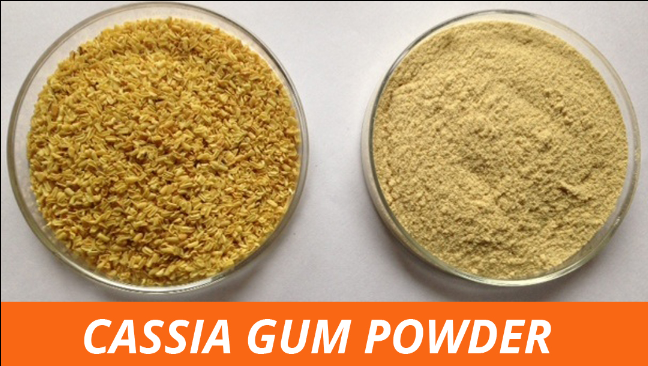Properties and Applications of Cassia Gum Powder
Cassia gum is a polysaccharide with a molecular mass of between 200,000 and 300,000 Da and derived from the seeds of Senna Tora. Its major components are mannose and galactose, which make it a good choice for oral and topical applications. Because of its high molecular mass, cassia gum is easily absorbed by the body.
Properties of Cassia Gum Powder
The chemical structure of Cassia gum makes it an excellent thickening agent. It also forms gels with colloids. Because of this, it is often used in place of Locust Bean Gum. While its properties are similar to guar gum, it is characterized by a high ratio of mannose to galactose. This can compromise the gelling effect of anionic polymers. Because of this, hydrocolloid blends containing Cassia can be made with less of the latter than with standard guar gum.

Applications & Benefits of Cassia Gum Powder
Cassia Gum is often used as a thickening agent in food products. Its water-soluble nature makes it an ideal substitute for expensive Carrageenan, as it improves the texture of food and prevents the loss of water. Additionally, it has many applications outside of food. It is a great option for replacing costly Konjac Gum in products.
The primary use of Cassia Gum is in the food industry. The material can be used in salad dressings, pickles, and dairy products. Its unique properties help improve viscosity and mouth-feel. It is also acid resistant and can be used as a natural solvent. It is also useful in the mineral extraction process. It is a cost-effective and environmentally-friendly addition to your food ingredients. It can improve the taste and texture of a variety of products.
The main uses of Cassia Gum are in food products. It is a natural emulsifier and is preferred in food products. Its anti-oxidant properties make it an excellent natural thickener. It is a safe alternative to carob and locust bean gum. Cassia gum is a highly nutritious substance derived from the seeds of the Cassia Tora plant. It contains at least 75% of polysaccharides. It is a useful agent for emulsification and foam stabilization. It also reduces freezer burn and thaw separation. In food preparation, it plays an essential role in maintaining proper digestion and is used as a thickening agent.
Cassia gum is used in pet foods and is also an excellent thickening agent. When boiled, it forms high-viscosity aqueous colloids, which are used in many food applications. It is also an excellent stabilizing agent and is used in veterinary preparations. In addition to being a great thickener, cassia gum also has a smooth surface. It is a versatile ingredient that can be found in many food products.
Cassia gum is a nutrient-rich gum that provides a smooth, creamy texture. It can also replace fat in low-fat processed foods. It is also effective in cream cheese formulations. Although it has a low GI, it can provide a richer mouthfeel and enhance product viscosity. It can increase the stability of an emulsion by preventing emulsion formation.
Its most popular use in wet pet foods as a binding agent, In addition, it provides texture and consistency to meats and poultry. Furthermore, it is an excellent natural corrosion inhibitor. With all these benefits, cassia gum is a beneficial ingredient in many food products and other industries.

In Conclusion
Cassia gum is a white, powdery substance derived from the seeds of the Cassia Tora tree. When soaked in hot water, the gum will dissolve and build up a viscosity. It has been used in a variety of applications, from air fresheners to pet food, and is widely available in India and the Middle East. It is available in powder form and is easy to prepare for many different purposes.

